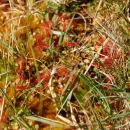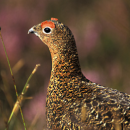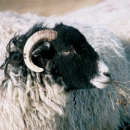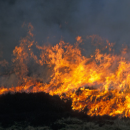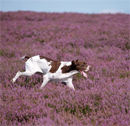As the climate changes and weather becomes warmer, wildfire risks increase and moorlands face very serious threats.
Sadly, almost all the incidents are inadvertently caused by carelessness. A discarded cigarette, or piece of broken glass left to magnify the sun’s rays, can cause the calamitous spark. Portable barbecues and camp fires are illegal on moorland. Placed on tinder dry shrubs and peat, they represent a dire fire hazard.
Wildfire spreads with alarming speed, often fanned by strong winds, travelling faster than a running hare. Engulfing dry heather, bracken, bilberry and trees, flames destroy everything in their path. During spring’s breeding season for ground nesting birds, the effects are devastating.
Not only is surface vegetation destroyed, but wildlife too. Intense heat drills down into peat, further fuelling the flames. Firefighters struggle to tackle underground blazes and have to wait for the fire to surface. Even when they think it has been extinguished, it can reignite many hours later.
Where soil survives, any remaining seeds are burnt, leaving the job of revegetating down to costly helicopters, which fly in materials to hold eroding surfaces together.
Costs involved in fighting large wildfires on moorland areas not managed for grouse shooting have collectively amounted to millions of pounds and are on the increase. With red grouse moor management, comes vegetation management through mowing and rotational burning and the risk of a severe wildfire is lower due to a reduced amount of vegetation available to burn (‘fuel load’).
Huge efforts are made to protect moorlands managed for red grouse from the ravages of fire. Ponds and scrapes have been created and strategic fire plan maps drawn-up with the local fire services. Our members belong to local fire operations groups, which map out fire-fighting resources. Most estates have specific measures and equipment in place.
MA owners and managers work hard to mitigate the risks. They liaise with the Fire and Rescue Service (FRS) and, through the Upland Management Group, will work with experienced wildfire experts to issue strategic wildfire management planning advice on wildfire breaks to protect moors from disastrous wildfire.
Vegetation should be kept short alongside popular walking routes, car parks and litter bins. Large areas of woody vegetation should be broken up with smaller managed burns or mowing to reduce the amount of vegetation available for a wildfire. Signs are used in high risk periods to warn visitors and cigarette pouches produced to make sure butts are extinguished and taken home.
FRS has invested in low impact 4x4s to cross the fragile moors and relied heavily on the advice and knowledge of gamekeepers about the nature of fires and the best equipment to fight them.
Preparing for worst case scenarios, local fire operations groups simulate major moorland blazes in carefully orchestrated training exercises on MA members’ land. Lancashire has included the Bay Search and Rescue Team, helicopters and fire engines, which all have digital estate fire plans loaded on their onboard computers.
Getting the right kit and people in place as quickly as possible is paramount and gamekeepers are always the first port of call.
Public co-operation is the one vital component in mitigating the risks of wildfire. People are urged to help protect the very places they love to visit and walk – by eliminating the hazards.




